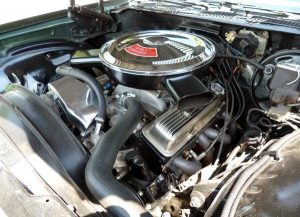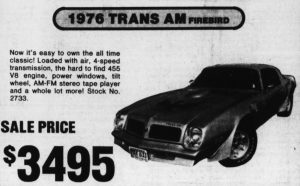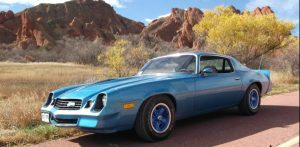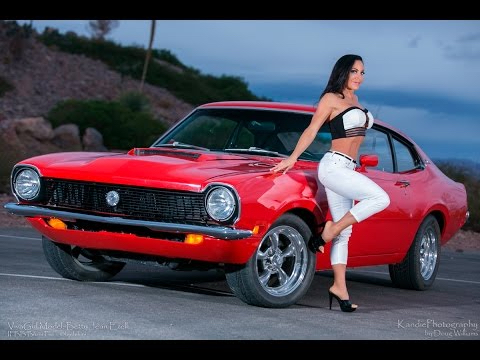We will one day look back fondly on the days just before Corona Fever hit as a golden era of vehicle design.
Or at least, a golden age of horsepower.
New cars come with a lot of it. Four cylinder engines in family cars routinely produce more of it than most V8s in muscle cars did as recently as the ’90s – when 220 or so horsepower was a pretty big deal and you had to buy something like a Mustang GT or Z28 Camaro to get it.
Today, a four cylinder Camry has almost that much power – and the V6 version has more power than a mid-90s Mustang GT (with a V8) had and runs quicker and goes faster while using about 30 percent less gas. 
There is nothing old that came with the power you can get in a new Dodge Hellcat. Even a race-engined muscle car like the iconic late ’60, early ’70s Dodge Charger equipped with the dual-carbureted 426 cubic inch Hemi V8 – one of the strongest muscle car engines ever – claimed 425 horsepower. It may have made as much as 500-something, as there was much fudging of the numbers going on in those days.
But it made nowhere near the Hellcat’s 700-plus no-fudging horsepower . . . with air conditioning. And an automatic transmission behind it.
However, the old stuff had latent horsepower. Huge potential, easily accessed – and in almost anything.
The Millennials and younger will probably not believe this but it was once the case that V8s and rear-wheel-drive were as common as front-wheel-drive and four cylinders are today. V8s were used regularly in family cars and even economy cars. They were common as options in run-of-the-mill sporty coupes like ordinary Firebirds and Camaros, Mustangs and Mavericks – not just the high-performance versions of those cars.
But the small block Chevy or Ford or Pontiac, Olds or Mopar V8 in your nothing-special-mobile was fundamentally the same engine as the high-performance versions used in the special models like the R/T Chargers, Olds 442s,Trans-Ams, Z28s, etc.
Perhaps you can see where this is going!
A 350 two-barrel in a Camaro could become more than the equal of the same basic engine as delivered in a Z28 with a factory four barrel, a hotter cam and low-restriction exhaust system – all of these parts easily bolted to the former or transferred from the latter if you had access to a wrecked Z28 just dragged to the junkyard.
Or a catalog.
A phone book’s thickness of horsepower-enhancing parts, most of them not beyond-reach expensive and well within reach of a determined backyard wrencher with some . . . wrenches. If it physically fit, it could be adapted and made to work, often well. This is no longer possible today because modern cars are integrated systems, all the components tied together into a single monolithic thing that cannot abide the non-authorized.
It was just a matter of nuts and bolts and adjustments to fit a four barrel where a two-barrel had been – or two four barrels where one four barrel had been. A performance cam slid in place of the low-performance cam. It was not necessary to “chip” or “reflash” anything. So long as there was air and fuel and spark and all three came together in roughly the right way, the thing would run.
It was especially fun to tap the latent horsepower of the not-so-high-performance cars of the mid-late 1970s and early ’80s, which the same forces that are ruining everything today had also ruined in those days – using the same technique. The government – those annoying busybodies with titles, badges and armed goons backing them up – were using the Slow Kill technique of requiring that with the passage of each new model year, each new car had to be incrementally “cleaner” – as well as “efficient,” defined as achieving “x” MPGs, as today (only more so).
It got so bad that by 1976 a Pontiac Trans-Am with the biggest available engine – 455 cubic inches, which is 7.5 liters in today’s metric-speak – only managed 200 horsepower and that was the most horsepower you could get in a new American car that year. A ’77 Z28’s 350 four-barrel barely moved the needle off its stop.
Just 175 hp.
But 275 hp – or 375 – was just a Saturday away.
These engines were so detuned that they were capable of the almost unbelievable. And it was all so accessible, so easy – and so much fun.
I had a ’78 Z28 – same basic car as the ’77 – with the identical 350 four-barrel under its fake-scooped (but very sexy-looking) hood. It came with a limp cam, not much compression and an exhaust seemingly designed to strangle it. A pair of crimped 2 1/4 inch pipes led to a single-inlet catalytic converter that worked like a pillow held firmly over the mouth of a bed-bound patient on a respirator.
The result of removing this impediment was spectacular – car or patient. Now wick up the ignition timing (free) and install richer jet in the carburetor (almost free) to get more gas to the fuel-starved engine.
It began to sound – and feel – like a Z28. A 1970 model. With a 1970 cam, it effectively became a ’70 Z28 – just for a lot less.And the same technique worked on any old Camaro – or Malibu – or Chevy, so long as it had the same basic engine – which millions of nothing-special old cars did have.
Hellcats are lots of fun . . . if you can afford one.
One upon a time, almost anyone could afford to get Hellcat-esque horsepower out of practically anything and for almost nothing.
Maybe post-Corona, we’ll be able to do that again!
. . .
Got a question about cars, Libertarian politics – or anything else? Click on the “ask Eric” link and send ’em in!
If you like what you’ve found here please consider supporting EPautos.
We depend on you to keep the wheels turning!
Our donate button is here.
If you prefer not to use PayPal, our mailing address is:
EPautos
721 Hummingbird Lane SE
Copper Hill, VA 24079
PS: Get an EPautos magnet or sticker or coaster in return for a $20 or more one-time donation or a $10 or more monthly recurring donation. (Please be sure to tell us you want a magnet or sticker or coaster – and also, provide an address, so we know where to mail the thing!)
My latest eBook is also available for your favorite price – free! Click here. If that fails, email me at EPeters952@yahoo.com and I will send you a copy directly!












What you described is exactly what I did with my 1968 Olds Delta 88. With two, maybe three, G notes all told, several weekends of wrenching, and some, pun intended, “rocket science,” I ended up turning your father’s Olds from a dud that could barely leave the launch pad into a high performing land yacht that could really blast off. Yet I kept the externals mostly stock ‘cause I wanted a sleeper. I sure do miss that car.
I came of automotive age in the very early 1970’s. That was the golden age of backyard wrenching, and muscle cars were just a few years old and both the cars and parts were still cheap. Small block Chevy parts were easy to get and the year didn’t matter, the parts would fit. I had a ’68 SS Camaro big block, and later got a ’69 Z28 convertible, I paid $900 for it. Bias ply tires sucked, and most muscle cars handled like crap, but man it was a load of fun!
Brings back memories! I don’t think I’ve seen guys hanging out around a car and tinkering with the engine in the last 35 years! Now they just order a chip……
(When Brent P. sees those Mavericks, he’s gonna be orgasmic!)
Morning, Nunz!
Some of my best memories are of spending warm afternoons piddling with my car or one of my friends’ cars. How it felt to chirp the tires on a 1-2 upshift the very first time. Hanging out on Friday night at McDonald’s – our cruise spot – bullshitting about our cars and sometimes heading out for a street race on the then-empty Dulles Access toll road. It’s all like a dream now, of an America that is hard to believe really did exist, once.
Ah, man! Tell me about it, Eric! The destruction of that America was the destruction of our culture as much as was the warping of the minds of the kiddies with the liberalism of the skools and the effeminization of males/rendering of them functionally useless.
I still remember when I was just a small kid, walking c. half a mile to the lake to go swimming on summer days, and we’d always pass this one house on the last block before the lake where there would always be a car parked in the shade, and rock and roll playing (I heard Smoke On The Water for the first time, walking past there!) and two or three not-quite-old-enough-to-be-adults-yet hanging out, perpetually working on that car.
That memory is emblematic to me of the world we once had. The idea of being Hut! Hut! Hutted would never even enter anyone’s remotest imagination; The idea that some politician would make a law against working on your own car in front of your own house….well….”Not here! This is America, Buddy! -even 60 miles east of NYC.
What a care-free time it was! You only had to worry about how your own actions might affect you- not how all the laws some psychopaths may invent would impact your life.
Even very much doggy foreign iron back in the day could be hopped up without a lot of green, if you were willing to search the junkyard and Bayless Racing catalogs. Add a 2-barrel progressive Weber from a junkyard Fiat 850 to an 1198cc pre-crossflow Ford Kent 4-banger, with a homebrew adapter of course…instant pickup of 10 HP. What’s that you say, a measly 10 HP? Well, when it was 50 to begin with…that’s a big upper! Snag a Super Six Carter BBD and manifold off a junked Volare for the ole 60-something Dart, and get an extra 20 HP or so, with a weekend’s work, along with opening up the exhaust a bit.
What is the red thing holding up that rather shapely young lady, is it a Ford Maverick? Yeah, I know, hard to see the car with all that beauty next to it…:-)
Wow,,,, Great looking car! Plenty of latent horsepower possibilities….